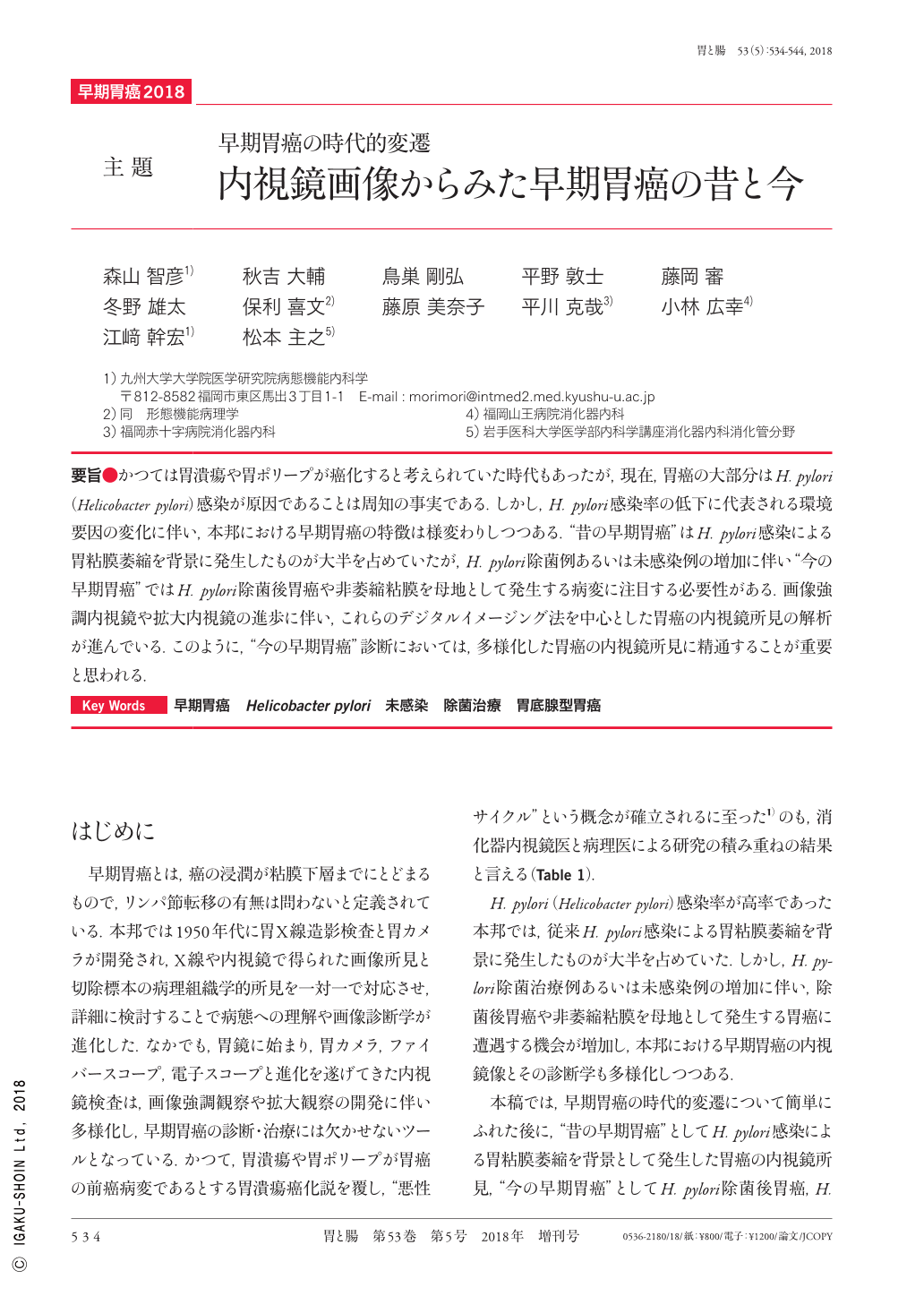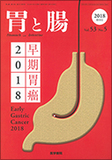Japanese
English
- 有料閲覧
- Abstract 文献概要
- 1ページ目 Look Inside
- 参考文献 Reference
- サイト内被引用 Cited by
要旨●かつては胃潰瘍や胃ポリープが癌化すると考えられていた時代もあったが,現在,胃癌の大部分はH. pylori(Helicobacter pylori)感染が原因であることは周知の事実である.しかし,H. pylori感染率の低下に代表される環境要因の変化に伴い,本邦における早期胃癌の特徴は様変わりしつつある.“昔の早期胃癌”はH. pylori感染による胃粘膜萎縮を背景に発生したものが大半を占めていたが,H. pylori除菌例あるいは未感染例の増加に伴い“今の早期胃癌”ではH. pylori除菌後胃癌や非萎縮粘膜を母地として発生する病変に注目する必要性がある.画像強調内視鏡や拡大内視鏡の進歩に伴い,これらのデジタルイメージング法を中心とした胃癌の内視鏡所見の解析が進んでいる.このように,“今の早期胃癌”診断においては,多様化した胃癌の内視鏡所見に精通することが重要と思われる.
Although gastric ulcers and polyps were formerly thought to be pre-cancerous lesions, Helicobacter pylori is currently defined as a definite carcinogen. However, along with changes in environmental factors, such as H. pylori infection, the clinicopathological characteristics of early gastric cancer have drastically changed over the past decades. Although most of the "former" gastric cancers have arisen from H. pylori-infected gastric mucosa, some "current" gastric cancers have arisen from H. pylori-eradicated or H. pylori-non-infected gastric mucosa. The analysis of findings of image-enhanced endoscopy with magnification has advanced and helped the endoscopic diagnosis of "current" early gastric cancer. Therefore, for the accurate diagnosis of "current" early gastric cancer, endoscopists should be familiar with these endoscopic findings.

Copyright © 2018, Igaku-Shoin Ltd. All rights reserved.


